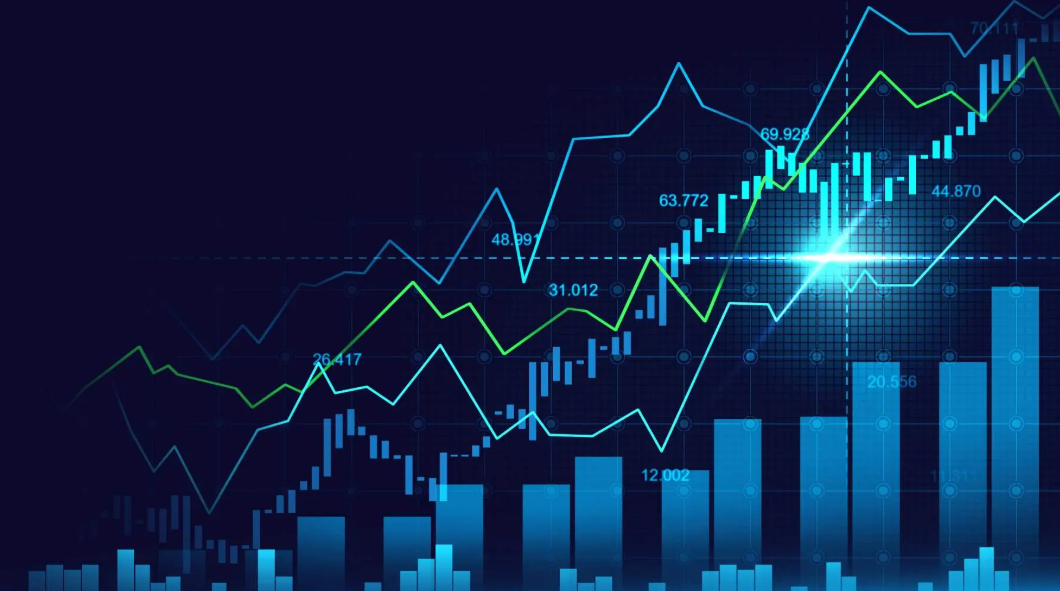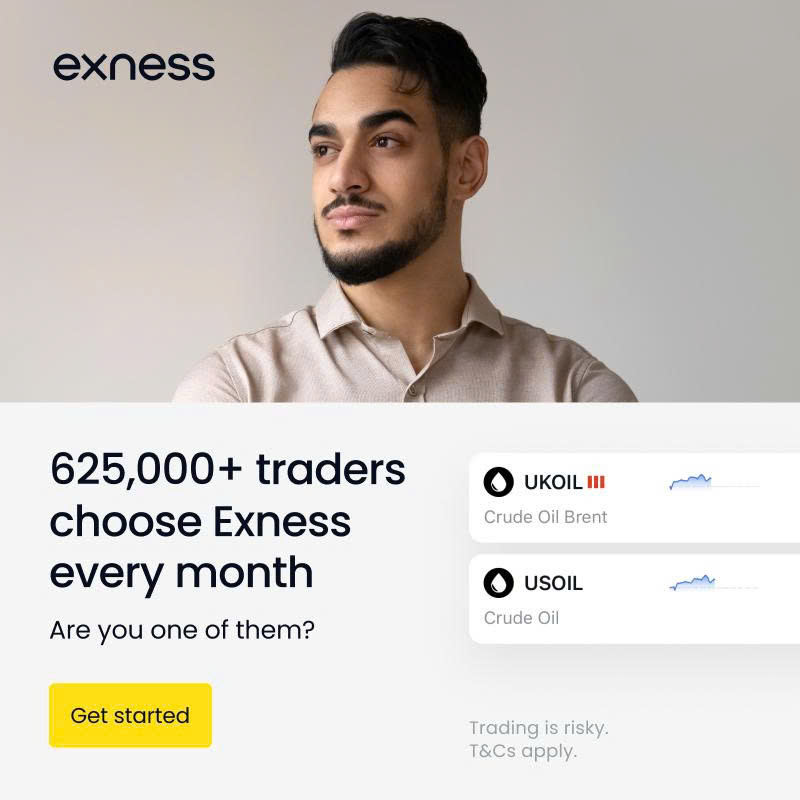
8 minute read
How Much Do I Need to Start Forex Trading in South Africa?
from Start South Africa
So, you’re curious about forex trading in South Africa and wondering, “How much money do I need to start trading in South Africa?” The short answer: you can start with as little as $5 to $100, depending on your broker and account type. But let’s be real—starting with a tiny amount might limit your potential, and there’s more to it than just throwing cash into an account. In this guide, I’ll break down the costs, factors to consider, and practical tips to kickstart your forex journey in South Africa. Stick with me, and we’ll make sense of it all in a way that’s clear, actionable, and beginner-friendly.
Top 4 Best Forex Brokers in South Africa
1️⃣ Exness: Open An Account or Visit Brokers 🏆
2️⃣ XM: Open An Account or Visit Brokers 💥
3️⃣ JustMarkets: Open An Account or Visit Brokers ✅
4️⃣ Quotex: Open An Account or Visit Brokers 🌐
Why Forex Trading in South Africa?
Forex trading—buying and selling currencies to profit from exchange rate changes—is booming in South Africa. Thanks to the internet, global brokers, and a volatile South African Rand (ZAR), it’s easier than ever to jump in. Plus, the Financial Sector Conduct Authority (FSCA) regulates the market, offering some peace of mind. But before you dive into the world’s largest financial market, let’s talk about the money you’ll need and how to make it work for you.
The Minimum Amount to Start Forex Trading
Here’s the deal: most brokers in South Africa offer accounts with low minimum deposits, ranging from $5 to $500. For example:
Micro accounts: $5–$50. Perfect for beginners testing the waters.
Standard accounts: $100–$500. A step up for those ready to trade with a bit more capital.
Premium/Pro accounts: $1,000+. Designed for experienced traders with bigger goals.
Brokers like Exness, HotForex, and Vestrado often have micro accounts starting at $5, while others, like AvaTrade, might ask for $100 for a standard account. If you’re just starting, a micro account is your best bet—it lets you trade smaller positions and keeps risks low while you learn.
But here’s a reality check: starting with $5 might feel safe, but it won’t make you rich overnight. Low capital means tiny profits (if any) and higher risk if you overuse leverage. So, what’s a realistic amount?
Realistic Starting Capital: $100–$1,000
For most beginners in South Africa, $100 to $1,000 (roughly R1,800 to R18,000, depending on exchange rates) is a sweet spot. Why? It gives you enough room to:
Practice proper risk management: Risking 1–2% per trade (e.g., $1–$2 on a $100 account) keeps your account safe.
Use leverage wisely: Leverage (like 1:100 or 1:500) lets you control larger positions with less money, but it’s a double-edged sword. More capital helps you avoid blowing your account on a single bad trade.
Cover trading costs: Spreads (the difference between buy and sell prices) and commissions can eat into profits, especially with small accounts.
If you’re dreaming of replacing your day job, you’ll need more—think $5,000 or higher. Professional traders often aim for 5–15% monthly returns, so a $5,000 account could theoretically yield $250–$750 a month. But that’s with a solid strategy and discipline, which takes time to develop.
Factors That Affect How Much You Need
Your starting capital depends on a few key factors. Let’s break them down:
1. Your Trading Goals
Are you trading for extra income, learning the ropes, or aiming to go full-time? If you’re just experimenting, $100 is fine. But if you want consistent profits, you’ll need more capital to make meaningful returns. For example, a 10% gain on a $100 account is $10—nice, but not life-changing. The same 10% on $1,000 is $100, which feels more rewarding.
2. Your Risk Tolerance
Forex is risky, and losses are part of the game. Only trade money you can afford to lose—never your rent or grocery cash. If you’re cautious, start small ($100–$500) and use a demo account first to build confidence. If you’re comfortable with higher risks, $1,000+ lets you take bigger swings while managing losses better.
3. Broker Requirements
Different brokers have different minimums. FSCA-regulated brokers like Vestrado or global ones like FXTM offer low-entry options, but always check their account types. Some brokers also charge higher spreads or commissions, which can impact small accounts more. Compare fees and pick a broker that aligns with your budget.

✅ Trade with Exness now: Open An Account or Visit Brokers 👈
4. Trading Style
Your strategy matters. Day traders, who open and close trades within a day, might need $500–$1,000 to handle multiple trades and volatility. Swing traders, who hold positions for days or weeks, can start with less ($100–$500) since they trade less frequently. Scalpers, who make quick trades for small profits, often need more capital ($1,000+) to cover fees and leverage risks.
5. Leverage and Lot Sizes
Leverage lets you control larger trades with less money. For example, with 1:100 leverage, $100 controls $10,000 in the market. But high leverage amplifies losses, so beginners should stick to lower ratios (1:10 or 1:50). Lot sizes also matter—micro lots (0.01) are ideal for small accounts, while standard lots (1.0) require more capital.
Hidden Costs of Forex Trading
It’s not just about the deposit. Here are other costs to watch out for:
Spreads and Commissions: Brokers charge spreads (e.g., 1–3 pips on USD/ZAR) or commissions per trade. Major pairs like EUR/USD have lower spreads, while ZAR pairs can be pricier due to lower liquidity.
Swap Fees: If you hold trades overnight, you might pay a swap fee (interest). Islamic accounts avoid these, which is great for South African traders following Sharia law.
Withdrawal Fees: Some brokers charge for bank transfers or e-wallet withdrawals. Check your broker’s fee structure.
Internet and Equipment: You’ll need a reliable internet connection and a laptop or smartphone. Slow internet can cause slippage (trades executing at worse prices), costing you money.
How to Start Forex Trading on a Budget
Ready to dive in? Here’s a step-by-step guide to start forex trading in South Africa without breaking the bank:
Educate Yourself: Learn the basics—currency pairs, pips, leverage, and risk management. Free resources like YouTube, broker webinars, and articles on sites like Investopedia are goldmines.
Choose a Regulated Broker: Stick to FSCA-regulated brokers (e.g., Vestrado, CMTrading) or reputable global ones (e.g., Exness, AvaTrade). Verify their license to avoid scams.
Open a Demo Account: Practice with virtual funds ($10,000 or more) to test strategies without risking real money. Most brokers offer this for free.
Start Small: Fund a micro account with $100–$500. Use micro lots (0.01) and risk 1–2% per trade to stay safe.
Develop a Strategy: Create a trading plan based on technical (charts, indicators) or fundamental (news, economic data) analysis. Backtest it on a demo account first.
Manage Risks: Use stop-loss orders to limit losses and take-profit orders to lock in gains. Never trade emotionally or chase losses.
Track Your Progress: Keep a trading journal to review wins and losses. This helps you refine your strategy over time.
Tips to Maximize Your Starting Capital
Want to make your money go further? Try these:
Use a ZAR Account: Avoid exchange rate fees by opening an account in South African Rand. Many brokers offer this.
Start with Major Pairs: Trade EUR/USD or GBP/USD for lower spreads and higher liquidity.
Avoid Overtrading: Stick to 1–3 trades at a time to manage risks and fees.
Stay Updated: Follow market news (e.g., Reserve Bank decisions, US economic data) to anticipate ZAR movements.
Learn Continuously: Join South African trading communities on X or forums to share tips and stay motivated.
Common Mistakes to Avoid
New traders often trip up. Here’s what to watch out for:
Using Too Much Leverage: High leverage can wipe out your account fast. Start low and increase as you gain experience.
Skipping the Demo: Jumping straight to live trading is a recipe for losses. Practice first.
Ignoring Taxes: Forex profits are taxable in South Africa. Keep records and consult a tax professional to stay compliant with SARS.
Chasing Losses: Losing is normal. Don’t double down to “win it back”—stick to your plan.
Final Thoughts: Start Smart, Grow Steady
So, how much do you need to start forex trading in South Africa? You can begin with as little as $5, but $100–$1,000 is more realistic for learning and seeing small profits. Your success depends less on the amount and more on your strategy, discipline, and risk management. Start with a demo account, choose a trusted FSCA-regulated broker, and treat forex like a skill to master, not a get-rich-quick scheme.
✅ Trade with Exness now: Open An Account or Visit Brokers 👈
Read more:

